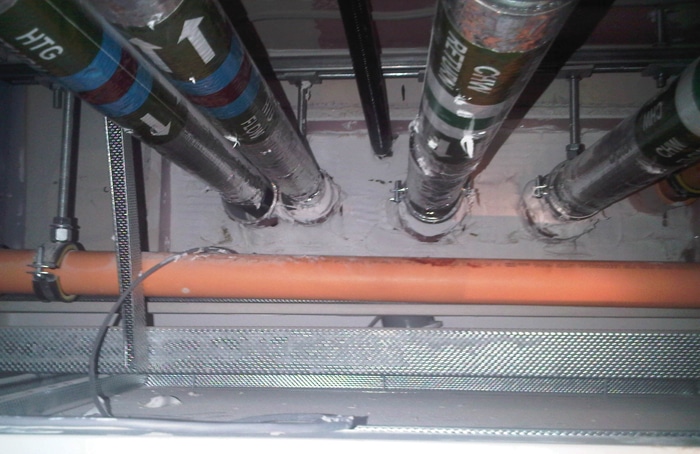 While M&E services are a necessity, it is often necessary to pass these services through fire-resistant floors and walls. Typically, openings are cut or drilled through the floor or wall so services can pass through and then the penetrating items are installed. However, this leaves an opening through which fire can spread. Firestop materials are installed within the openings and around the services to prevent the passage of flames and hot gases through an otherwise fire-resistive assembly. Steve Halcrow considers the requirements of fire stopping in drywall systems.
While M&E services are a necessity, it is often necessary to pass these services through fire-resistant floors and walls. Typically, openings are cut or drilled through the floor or wall so services can pass through and then the penetrating items are installed. However, this leaves an opening through which fire can spread. Firestop materials are installed within the openings and around the services to prevent the passage of flames and hot gases through an otherwise fire-resistive assembly. Steve Halcrow considers the requirements of fire stopping in drywall systems.
I am sure you will not need me to explain how important it is that the systems we install perform as they are intended, particularly in the event of a fire.
The most basic requirement is of course to ensure that partitions are constructed to the correct specification in terms of number, thickness and type of plasterboard and correct installation of the stud framework.
Beyond this however there are a number of critical items that should be carefully constructed and checked which will significantly affect the overall performance of the system in question.
Firstly let us consider the head detail, which in the majority of cases (certainly in non-domestic applications) is a deflection head. It is imperative that these are constructed in accordance with the design and recommendations of the manufacturer of the particular system in question.
Look at it this way: Heat rises. In any fire situation the heat and pressure is at its greatest high up, meaning that the heads of our partitions are the most vulnerable part of all to attack. This will quickly ‘find out’ any weaknesses in the detail and, make no mistake about it, will lead to early failure if not built as it should be. Given that our walls rely heavily upon their head and base connection, a failure at the head will lead to early collapse with potentially catastrophic results.
Main points to watch:
- Fire stopping – fillets of board beneath head tracks: where these are specified they must be of the right type and size and installed carefully, any damaged ones being replaced immediately. Bear in mind as well damage that may take place between installation of the head tracks and the remainder of the partition, as sections may need to be replaced.
- Fixings: Use only the type and length of fixing specified, and make sure they are properly installed. It is all too easy to assume any fixing will do but be wary, as these details are extensively tested and proven to work with specific fixings.
- Mastic seals: Once again only the specified type of mastic should be used, and it must be installed in the correct place as shown in the approved detail.


